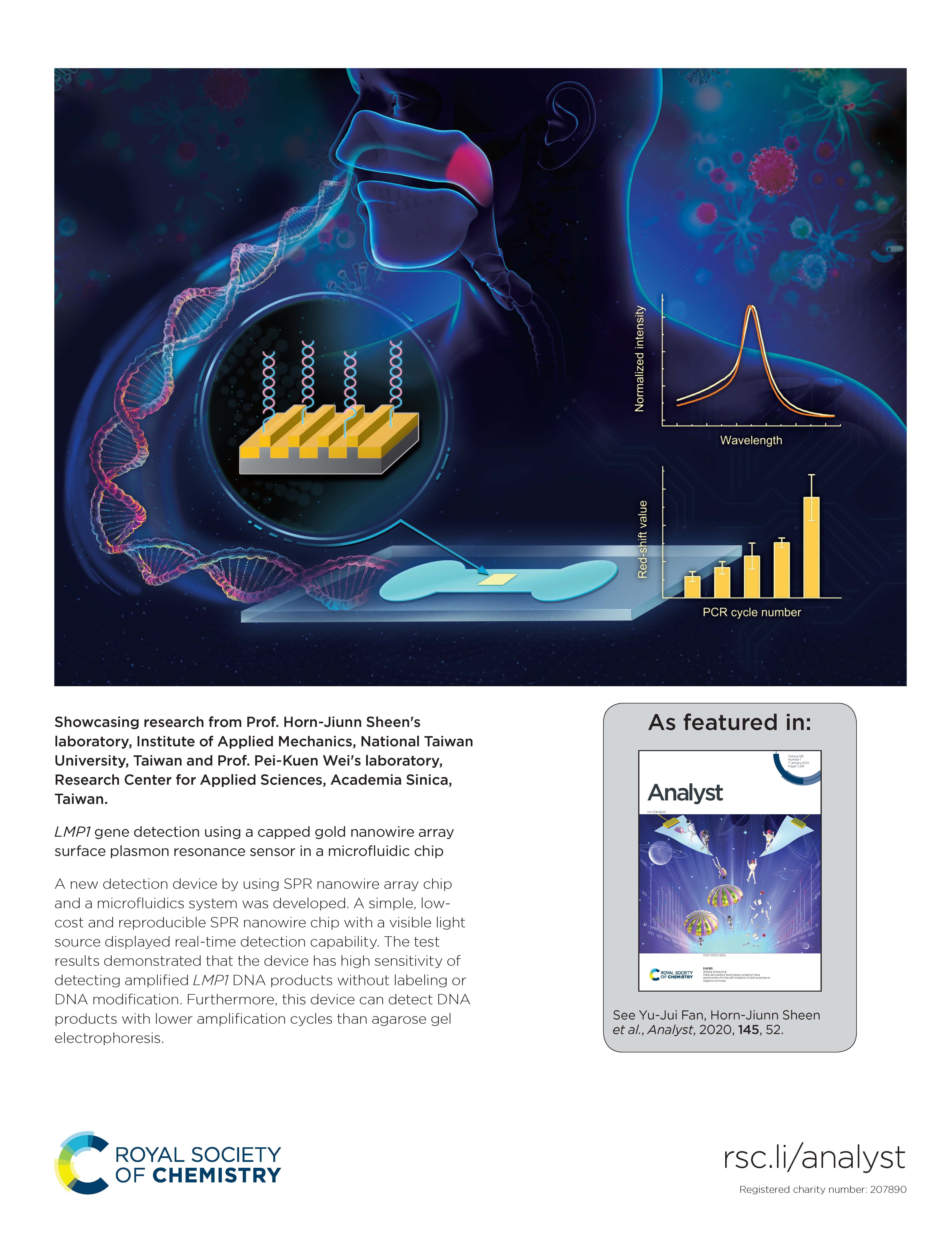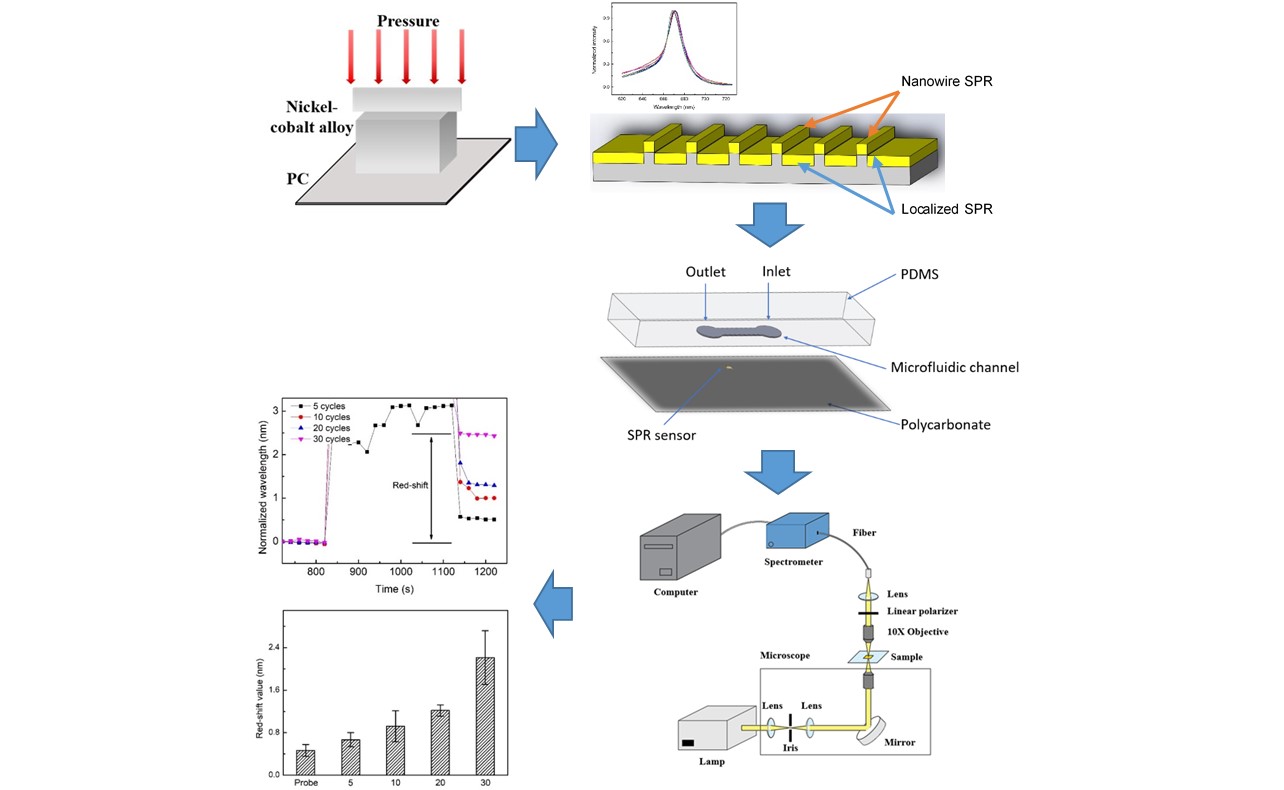Prof. Sheen (Institute of Applied Mechanics, National Taiwan University) and Prof. Wei (Research Center for Applied Sciences, Academia Sinica) recently published a paper titled “LMP1 gene detection using a capped gold nanowire array surface plasmon resonance sensor in a microfluidic chip” in the Analyst journal, and the article was selected as the outside back cover of the 145th issue of 2020.

Recently, standard methods for detecting latent membrane proteins (LMPs, i.e., LMP1, LMP-2A, and LMP-2B) or the Epstein–Barr virus (EBV) are polymerase chain reaction (PCR) and real-time (rt) PCR. A rapid, label-free and highly sensitive detection method for LMPs would provide a more efficient and economical way. Lab-on-a-chip (LOC) with a microfluidic system and surface plasmon resonance (SPR) are two effective methods for the development of next-generation testing devices.

This study developed a capped gold nanowire array and a microfluidic test platform to provide a fundamental understanding of the kinetic binding of SPR nanowires and the surface gold refractive index. Results of kinetic binding analysis indicated that a peak shift resulted from a specific hybridization of the target molecule with the immobilized probe on the gold nanostructures. This new method is proved to have high sensitivity to detect amplified DNA products without labeling or complex sample treatment.
This study investigated a capped gold nanowire array and a microfluidic test platform to provide a fundamental understanding of the kinetic binding of SPR nanowires and the surface gold refractive index. The capped gold nanowire array used in this study have the advantages of cost-effectiveness and good measurement and production repeatability. Furthermore, the variations of the resonance wavelengths are within 1% for different chips. Meanwhile, the testing device is proved to ensure the detection of the PCR products at lower cycle numbers. In contrast, using the agarose gel electrophoresis method, the visible brightness band could not be produced.
The new rapid testing system can improve the biosensing of DNA-amplified products and can be used to develop rapid detection devices with small-footprint nanostructured SPR chips. Meanwhile, the SPR chip can be integrated into the online PCR device platform in the future.
Financial support from the Ministry of Science and Technology of Taiwan is acknowledged.
Contact: Prof. Sheen This email address is being protected from spambots. You need JavaScript enabled to view it.
Analyst
LMP1 gene detection using a capped gold nanowire array surface plasmon resonance sensor in a microfluidic chip.
https://doi.org/10.1039/C9AN01419E
